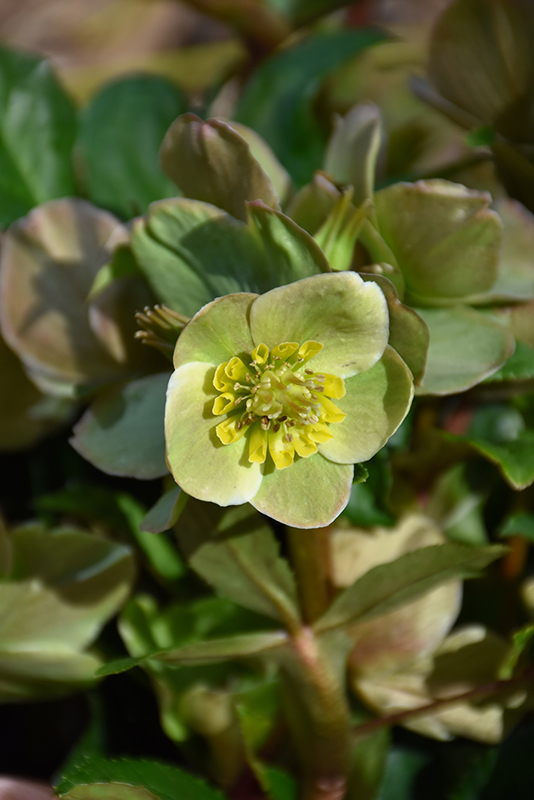HGC® Cinnamon Snow Hellebore
Helleborus 'Cinnamon Snow'
Plant Height: 12 inches
Flower Height: 16 inches
Spacing: 20 inches
Sunlight:
![]()
![]()
Hardiness Zone: 4a
Other Names: Lenten Rose
Group/Class: Helleborus Gold Collection
Description:
A beautiful compact and easy to grow selection, great for adding color to late winter and early spring containers and beds; creamy white flowers with touches of rose and cinnamon grow on sturdy red flower stalks; prefers part to full shade
Ornamental Features
HGC® Cinnamon Snow Hellebore features showy creamy white cup-shaped flowers with a brick red flare at the ends of the stems from late winter to early spring. Its glossy oval compound leaves remain green in color throughout the year. The brick red stems can be quite attractive.
Landscape Attributes
HGC® Cinnamon Snow Hellebore is an herbaceous evergreen perennial with an upright spreading habit of growth. Its medium texture blends into the garden, but can always be balanced by a couple of finer or coarser plants for an effective composition.
This is a relatively low maintenance plant, and should be cut back in late fall in preparation for winter. Deer don't particularly care for this plant and will usually leave it alone in favor of tastier treats. It has no significant negative characteristics.
HGC® Cinnamon Snow Hellebore is recommended for the following landscape applications;
- Mass Planting
- Rock/Alpine Gardens
- Border Edging
- General Garden Use
- Naturalizing And Woodland Gardens
Planting & Growing
HGC® Cinnamon Snow Hellebore will grow to be about 12 inches tall at maturity extending to 16 inches tall with the flowers, with a spread of 24 inches. When grown in masses or used as a bedding plant, individual plants should be spaced approximately 20 inches apart. Its foliage tends to remain dense right to the ground, not requiring facer plants in front. It grows at a medium rate, and under ideal conditions can be expected to live for approximately 5 years. As an evegreen perennial, this plant will typically keep its form and foliage year-round.
This plant does best in partial shade to shade. It does best in average to evenly moist conditions, but will not tolerate standing water. This plant should not require much in the way of fertilizing once established, although it may appreciate a shot of general-purpose fertilizer from time to time early in the growing season. It is not particular as to soil pH, but grows best in rich soils. It is somewhat tolerant of urban pollution, and will benefit from being planted in a relatively sheltered location. This particular variety is an interspecific hybrid, and parts of it are known to be toxic to humans and animals, so care should be exercised in planting it around children and pets. It can be propagated by division; however, as a cultivated variety, be aware that it may be subject to certain restrictions or prohibitions on propagation.
